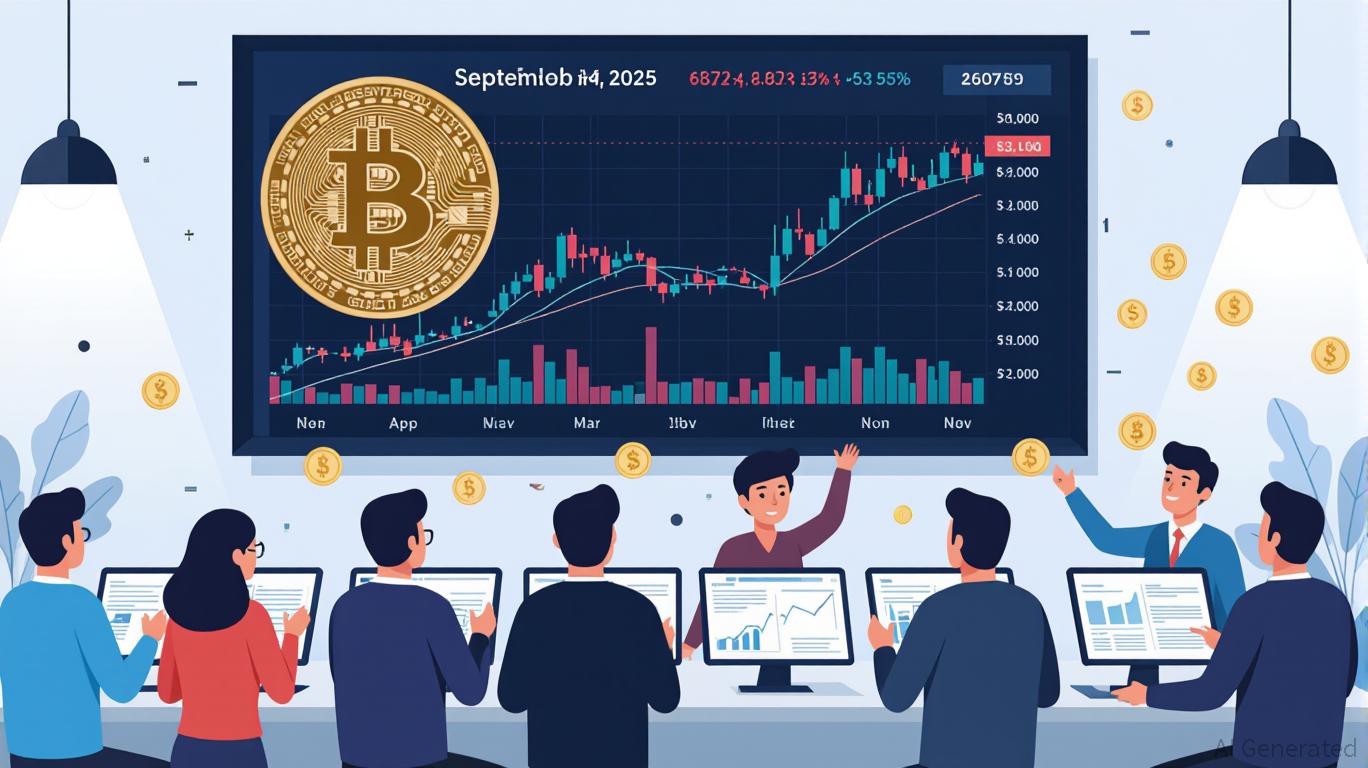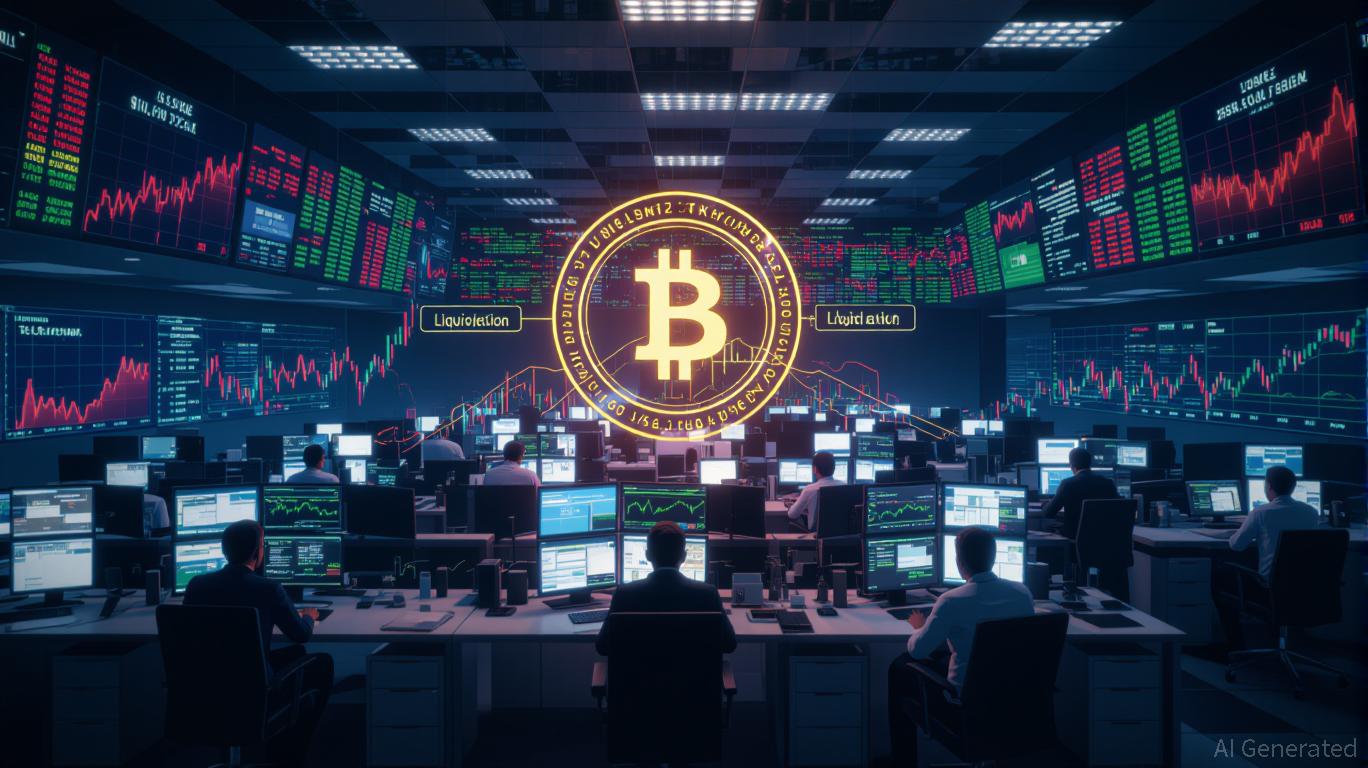Fed Split: Should They Prioritize Fighting Inflation or Supporting Employment?
- Fed policymakers remain divided over prioritizing inflation control or labor-market support, with hawks like Bostic urging rate stability until inflation nears 2%. - Dovish officials argue slowing job growth (29,000 monthly payrolls in late 2024) demands rate cuts to sustain economic momentum despite inflation risks. - Tariff adjustments and delayed economic data complicate decisions, with Treasury's import relief measures facing criticism for potential inflationary rebound. - Looming student loan tax ch
The Federal Reserve has adopted an increasingly cautious stance regarding interest rate reductions, as internal disagreements among policymakers deepen. Officials are divided on whether inflation or a weakening job market represents the more significant risk. Raphael Bostic, President of the Atlanta Fed and known for his hawkish views, reaffirmed his belief that rates should not be lowered until there is "definitive proof" that inflation is moving toward the Fed's 2% goal, according to a report by

Newly announced tariffs have added to the complexity. Treasury Secretary Scott Bessent indicated there would be "significant" tariff reductions on items like coffee, bananas, and other imports to help lower consumer costs, as
Adding to the uncertainty is the prospect of a "tax bomb" for student loan borrowers. Advocacy organizations and Democratic lawmakers have cautioned that debt canceled under income-driven repayment plans will become taxable in 2026, potentially leaving millions with tax bills ranging from $5,800 to $10,000, according to CNBC. Although this issue is separate from monetary policy, it highlights the wider affordability challenges influencing economic discussions.
There is no consensus in the markets about the Fed's upcoming actions. While many investors still anticipate a rate cut in December, the odds have lessened as hawkish voices advocate for maintaining current rates, as Investing.com reported. Should a December cut occur, it would likely flatten the yield curve and weaken the dollar, which could benefit emerging markets and commodities such as gold and copper, according to Investing.com. Conversely, postponing a rate reduction could lead to a sharp increase in Treasury yields and a downturn in stock prices.
Disclaimer: The content of this article solely reflects the author's opinion and does not represent the platform in any capacity. This article is not intended to serve as a reference for making investment decisions.
You may also like
Trump’s Wall Street Fundraiser Sparks Renewed Debate Over Deregulation and Regulatory Oversight Following Trade Finance Crisis
- Trump dined with Wall Street leaders amid First Brands' $3B trade finance collapse, exposing non-bank lending risks and triggering calls for stricter oversight. - Jefferies faces scrutiny over $3B in tied debt as its stock fell 19%, while JPMorgan's Dimon warned of systemic gaps in non-bank lending oversight. - Trump's 50-year mortgage proposal sparked debate, with critics fearing "debt for life," while a 42-day government shutdown worsened market uncertainty. - The administration's deregulatory agenda c
Digital Identity, No Data Required: ZK Protocol Secures $9M to Champion a Privacy-Centric Tomorrow
- Self Labs raised $9M in seed funding led by Greenfield Capital and SoftBank, with participation from Web3 leaders like Sreeram Kannan and Sandeep Nailwal. - The ZK-based platform enables privacy-preserving identity verification using zero-knowledge proofs and supports 129 countries' biometric passports and India's Aadhaar system. - A points-based rewards program incentivizes on-chain verification, while integrations with Google, Aave , and Velodrome expand use cases like token distribution and age checks

Bitcoin’s Sharp Decline: Is This a Healthy Correction or an Ominous Signal?
- Bitcoin fell 10.5% in November 2025 amid a $19B derivatives crash, driven by Fed policy uncertainty and U.S.-China trade tensions. - Regulatory shifts and leveraged liquidations (1.6M traders impacted) exposed vulnerabilities in crypto's derivatives-heavy market structure. - Institutional demand persisted (e.g., JPMorgan's 64% ETF stake increase), suggesting long-term adoption despite short-term volatility. - Derivatives recovery may lag until 2026, hinging on Fed rate clarity and inflation trends, with

Bitcoin Leverage Liquidation Spike: Systemic Threats in Crypto Derivatives During Q4 2025 Market Turbulence
- Q4 2025 crypto derivatives saw $20B in liquidations as Bitcoin fell below $100,000, exposing systemic risks from extreme leverage (up to 1,001:1) and interconnected markets. - Platforms like Hyperliquid and Binance faced $500M+ losses in 24 hours due to cascading margin calls, with 78% of perpetual futures volume amplifying volatility through feedback loops. - Regulators scramble to address risks as unregulated leverage, macroeconomic pressures, and geopolitical tensions (e.g., U.S.-China trade wars) inc
